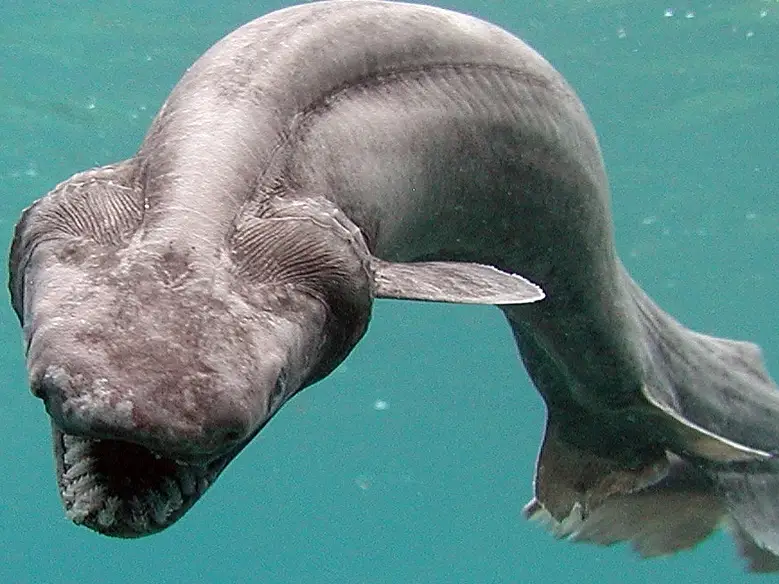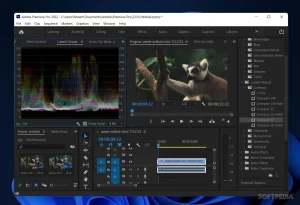Dangerous creatures in mariana trench Over 95% of Earth’s living area is found in a strange realm beneath the ocean’s surface, large enough to house 20 Dangerous creatures in mariana trenchWashington Monuments piled on top of one another. But there is still a lot to learn about the deep water. The light begins to fade quickly as you descend into this enormous living area. By 650 feet (200 meters), there is no more light visible to our eyes, and the temperature has drastically decreased. As you descend further, the weight of the water above you builds up to a tremendous crushing force. The light that is still leaking through has faded to the point where it is only visible in the form of microorganisms and creatures. The temperature at 13,000 feet (4,000 meters) is barely warmer than what your refrigerator would be.
But the majority of the space in the ocean is a dark world. Dive below the epipelagic and you will enter the mesopelagic zone. Also known as the twilight zone, this area receives only faint, filtered sunlight, allowing no photosynthetic organisms to survive. Many animals have adapted to the near-darkness with large eyes and counterillumination
You only need to look at the blobfish to get an idea of what it does to animals. The blobfish is a fish that has become known as the ugliest in the ocean. However, this accolade may be unfair because it is based solely on the appearance of the fish at the surface.
It looks normal in its natural habitat, which is around 610-1220 meters (2,040-4,040 feet) below the earth’s surface. But when it’s brought up to lower atmospheric pressure, it passively explodes. It’s a testament to the extremes in which the Mariana Trench has evolved animals to thrive.
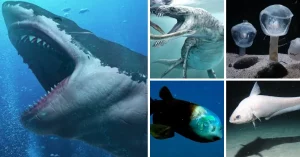
Dangerous creatures in mariana trench A sea cucumber drifts in the deep sea. (NOAA)
Beginning with the bathypelagic zone, the ocean is completely void of light from the sun, moon and stars. Animals create their own bioluminescent light and, if they haven’t lost them, have highly light-sensitive eyes to see the light produced by other animals. The water temperature is near freezing. Travel deeper and you will find the abyssopelagic zone—the abyss.Dangerous creatures in mariana trench And finally, the deepest reaches of the ocean are found at the bottom of precipitous trenches. These locations venture into the hadalpelagic zone, places so deep only a handful of humans have ever traveled there so far.
Mesopelagic
Barely any light filters down to these depths, and yet still life thrives here. Squid, krill, jellies, and fish are super abundant in this zone. About 90 percent of the world’s fish (by weight) live in the mesopelagic—about 10 billion tons of fish. The bristlemouth fish alone may number at about a quadrillion, making them the most numerous family of vertebrates (animals with a backbone) in the world.
Mesopelagic
The area of the ocean between 650 and 3,300 feet (200-1,000 m) is called the mesopelagic. Barely any light filters down to these depths, and yet still life thrives here. Squid, krill, jellies, and fish are super abundant in this zone. About 90 percent of the world’s fish (by weight) live in the mesopelagic—about 10 billion tons of fish. The bristlemouth fish alone may number at about a quadrillion, making them the most numerous family of vertebrates (animals with a backbone) in the worldDangerous creatures in mariana trench
Abyssopelagic
The Abyssopelagic extends from 13,100 to 19,700 feet (4,000-6,000 m) down to the seafloor or abyssal plain. Animals that can withstand the pressures in this depth, which can reach up to 600 times what is experienced at sea level are highly specialized. Tripod fish are an oddity that can be found in this zone. Often found resting on the seafloor, tripod fish can pump fluid into their elongated fins to make them like rigid stilts (or as their name implies, a tripod), sometimes a few feet high. Rattail fish, octopuses, and sea cucumbers are also well adapted to the intense pressure here.
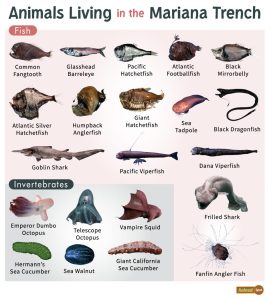
Dangerous creatures in mariana trenchWhale Falls
Whale falls occur when a whale dies in surface waters and sinks to the bottom of the ocean. Trees, sharks, and large fish can also fall to the seafloor and provide food. Dangerous creatures in mariana trench The sudden arrival of food prompts creatures from afar to congregate and feast on the fleshy carcass. Once the flesh has been stripped and consumed by predators, bone eaters arrive so that not even the skeleton will remain. Whale bone consists of roughly 60 percent fat by weight, up to 200 times the amount of nutrients typically found at the seafloor. Specially adapted worms and snails take advantage of this feast by boring into the inner bone with acid and absorbing the fats inside with the help of bacteria. The worms, called Osedax worms, ride ocean currents as larvae and then settle on the exposed bone. The first of these larvae develop into females, with one end tunneling into the bone
Dangerous creatures in Mariana trenchHydrohermal Vents
within the earth’s crust.
Avast Premium
These are hydrothermal vents. Hydrothermal vents exist in volcanically active areas. Seawater makes its way through the cracks in the earth’s crust until it reaches hot magma. As the water heats it absorbs metals like iron, zinc, copper, lead, and cobalt from the surrounding rocks. Hot water rises, carrying these minerals to the surface of the sea floor. There, it meets cool ocean water, an event that sparks chemical reactions and forms solid deposits. Over time the deposits create towers—forming the classic image of a hydrothermal vent.
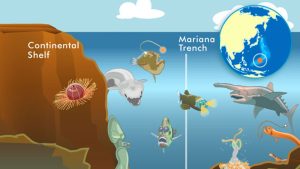
Interesting Facts About the Mariana Trench
Don Walsh, a US Army Lieutenant and Jacques Piccard, an engineer, were the first to dive into the Mariana Trench in 1960.
The United States has the deepest part, called the Challenger Deep. It was declared a national landmark.
Mount Everest, the tallest mountain on earth, would be still 7,000 feet below the sea level if you placed it inside the Mariana Trench.
The Mariana Trench is the deepest spot on Earth. It has extraordinary levels of pollution. These levels are higher than those of a heavily-polluted Chinese River.
Divers have found plastic bags, candy wrappers and other items in the trench. Even the most remote parts of the world are still affected by humans.
Researchers have recorded metallic sounds coming from the Mariana Trench. They concluded after much discussion that the sound came from baleen whales.
What is at the Mariana Trench’s bottom? Scientists have discovered many new and unique species, as well as many others that they are yet to discover!




